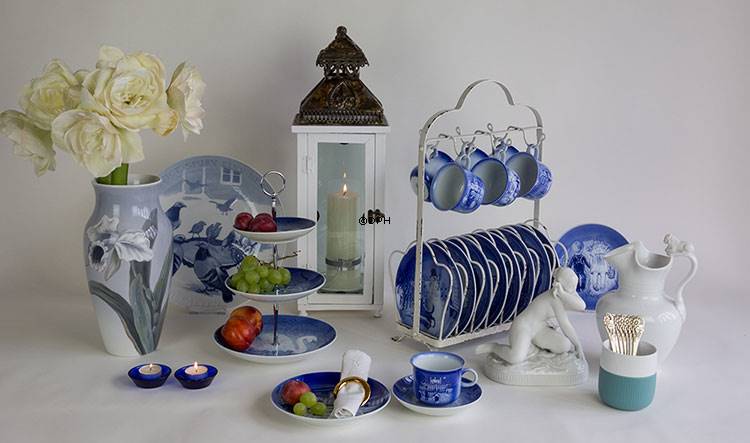The porcelain factory Désirée, also called Old Copenhagen Blue and Svend Jensen abroad, was once among the best porcelain manufacturers in Denmark. The Désirée name has been used in different contexts over the years and was perhaps best known by the labels of the tableware series they produced.
Popular dinnerware by Désirée
 |
| The logo of Désirée Denmark Svend Jensen Old Copenhagen Blue |
Brief history behind Désirée
Plates inspired by children and the young at heart
Désirée really started to produce porcelain in 1970, when they presented their first editions of a Désirée Mother's Day and Désirée Hans Christian Andersen Christmas plate. Where the Mother's-Day-plates by Désirée obviously picked up inspiration for the motifs from the mind's and imagination of children, the world famous Danish poet and author Hans Christian Andersen and his fairy tales were the creative source for the illustrations on the Désirée Christmas plates. |
| The Mother's Day plates are still very decorative - on the wall or on the table |
A total of 25 plates were made for Mother's Day until 1994 and all together 33 Désirée Christmas plates. The last Christmas plate by Désirée is from 2002.
Click here to see all the beautiful parts of Désirée's porcelain production at DPH Trading's webshop.
See pictures from the porcelain production at the factory and read more about Désirée's history here.

Comments
Post a Comment